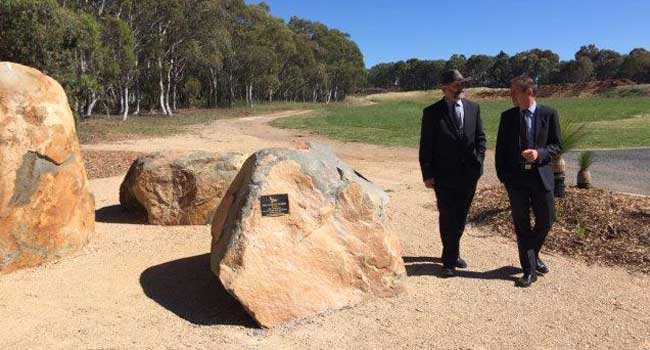
There are no headstones, bodies can be placed directly in the earth or in a biodegradable casket and people are buried with radio frequency identification devices to map their location: welcome to natural burial, Canberra style.
From today (Tuesday), Canberrans can opt for a more environmentally-friendly burial at a new natural burial site opened at Gungahlin Cemetery or chose natural burial at another Canberran Cemetery.
ACT Minister for Territory and Municipal Services, Shane Rattenbury said a number of individuals and groups in Canberra had contacted him about the possibility of a natural burial and he was pleased this was now a reality.
“A natural burial is the act of returning a body as naturally as possible to the earth. All material involved with the burial, including the shroud or casket, is biodegradable,” Mr Rattenbury said.
“This is not only more environmentally friendly than a traditional burial or cremation, but is also more culturally appropriate for many Canberrans.”
The Natural Burial Association recommends that bodies are not embalmed or cremated but buried in a simple casket or shroud. Coffins must be made from natural untreated timber, excluding nails and screws.
It is not just the casket that should be biodegradable. The deceased must be dressed in clothes which come from sustainable sources which will biodegrade.
The new natural burial site Gungahlin Cemetery is one hectare of bushland set amongst brittle gums and yellow box eucalyptus.
Large rocks at the site’s entrance serve as a communal memorial, rather than headstones. Families can put small plaques dedicated to their loved ones at the entrance and leave tokens such as flowers.
“No permanent visual markers or plaques will be placed inside the natural burial site with its design to remain blended with the surrounding bushland,” Mr Rattenbury said. “A suitable tree or shrub can be planted at the site if the family wishes.”
The ACT Public Cemeteries Authority has strict rules about what can be left on a grave. Fresh flowers can be left at the time of burial but they will be removed after two weeks. Families can leave fresh flowers and other tokens at the communal memorial, provided the wrappings and ribbons around flowers are biodegradable.
Natural burial also has a helping hand from the latest technology.
To keep track of who is buried where, people will be buried with a radio frequency identification device and their grave recorded on the Canberra Cemetery digital mapping system.
“Individuals will be buried with a small RFID device so that their site can be definitively located by cemetery management,” Mr Rattenbury said.
“For those who wish to be cremated and still be within the natural burial site, cremated remains will be placed inside bio-degradable containers or placed directly into the earth.”
A map from the Canberra Cemeteries office will enable people to visit the actual site of a loved one’s burial. However, the location of cremated remains will not be mapped.
You can find out more on natural burials here.





Leave a Reply